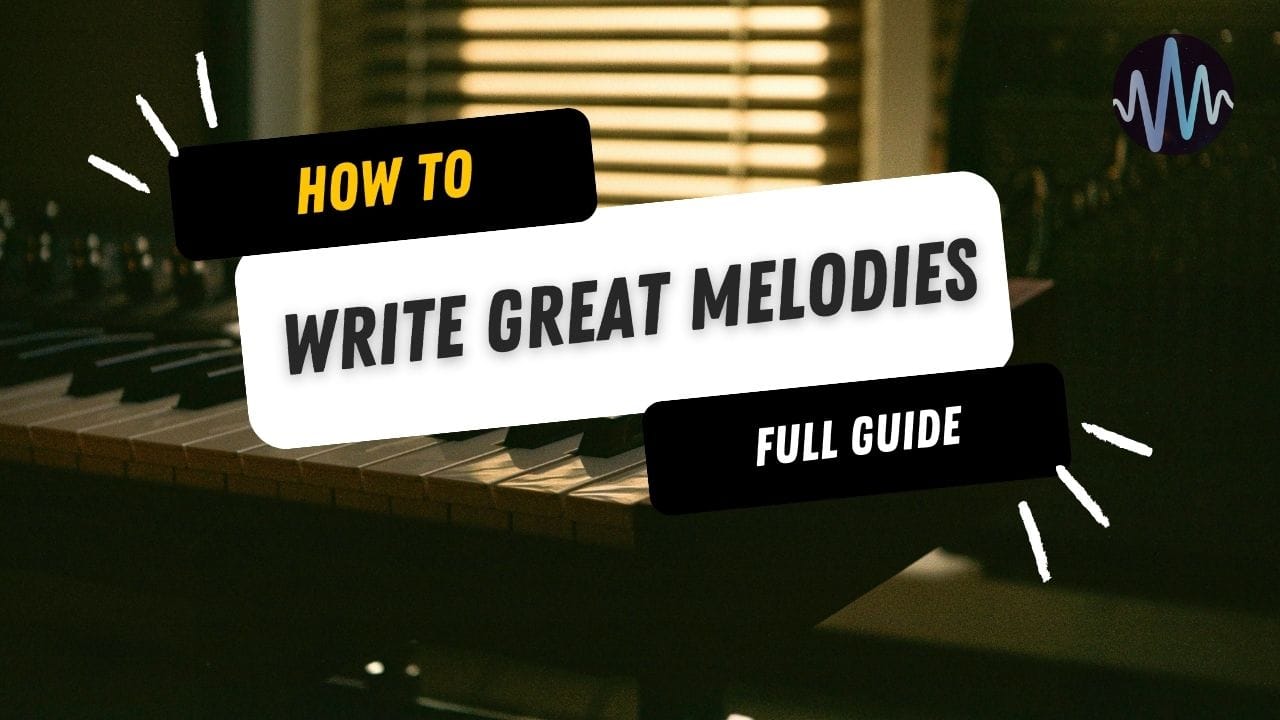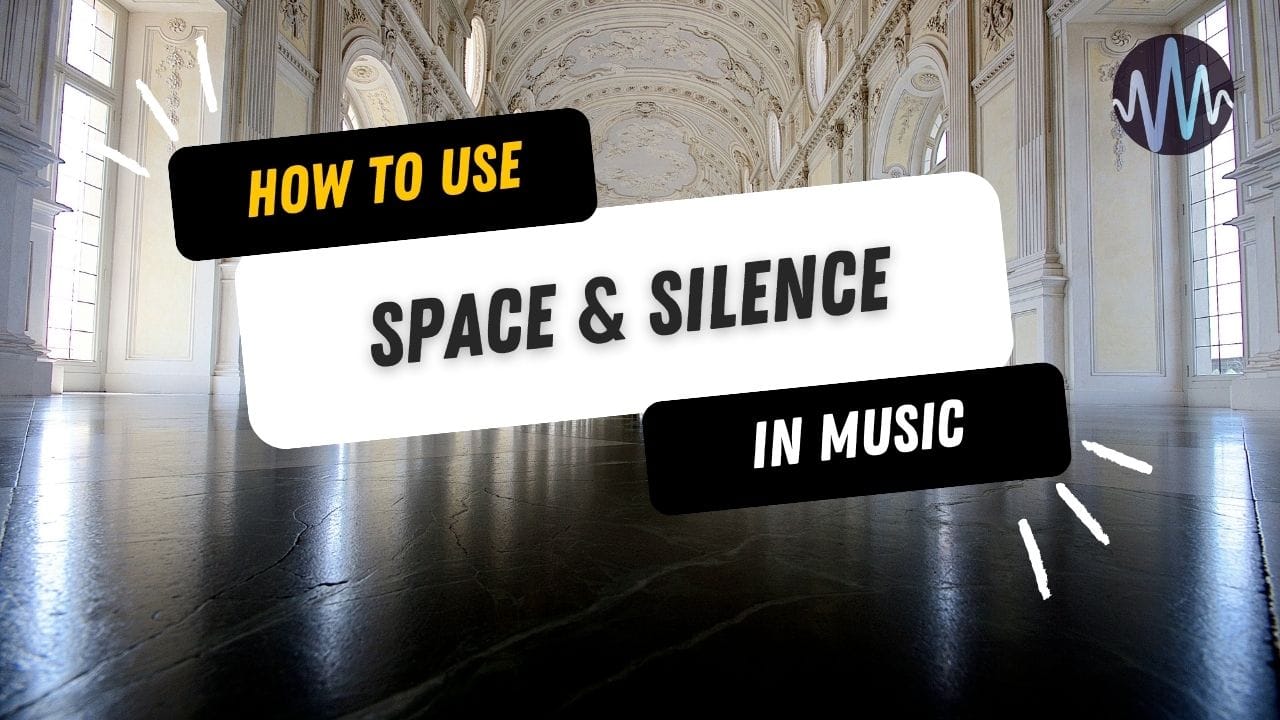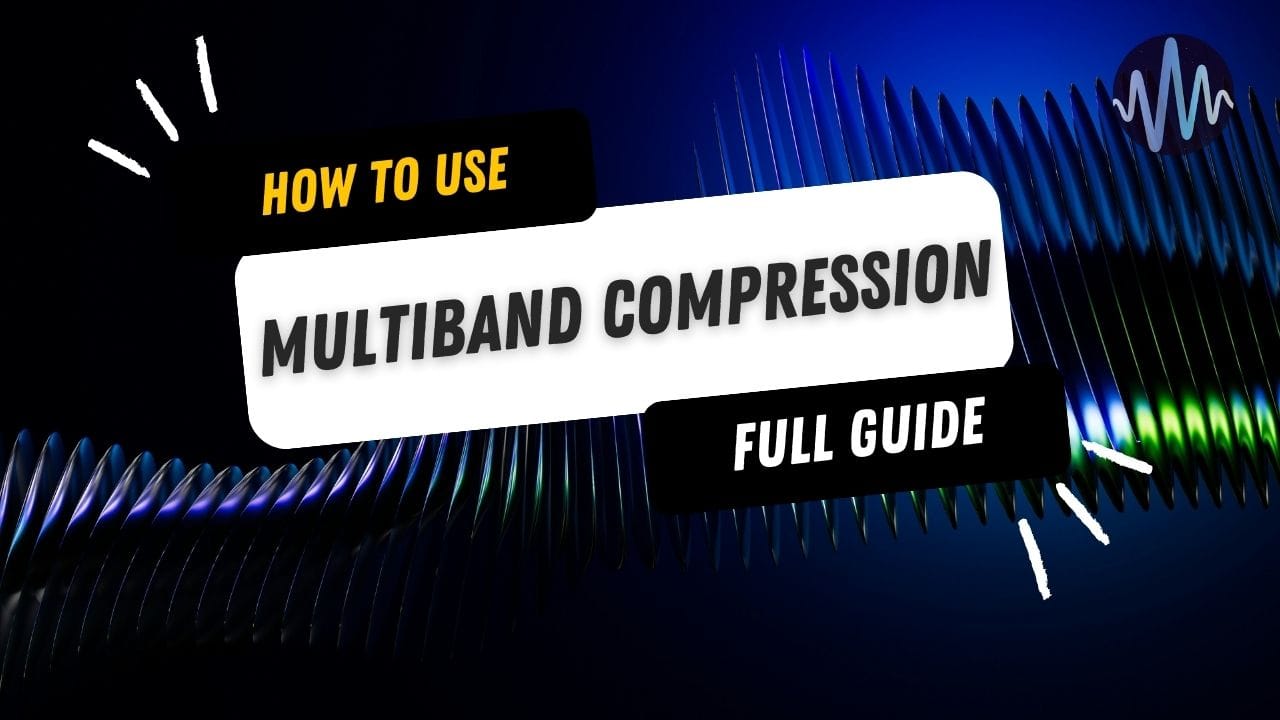
Feeling stuck because you don’t know how to write melodies for a song? You’re not alone!
In this article, we’ll discuss a few melody writing tips you can always use to write engaging melodies, whether your songwriting journey has just started, or you’re a seasoned producer experiencing a creative drought.
What Is a Melody?
A melody is a sequence of notes that you hum when you think of a song that’s stuck in your head.
While chords are multiple notes sounding at the same time, a melody is a single line of music, played one note at a time. Even in music with a lot of stuff going on at once, the melody is the "main" line that catches our attention.
To be catchy, a melody usually relies on a solid structure and an intelligent use of repetition and variation.
A melody “sits” on the song’s chords, which are an underlying harmonic movement that enriches the song and connects melody and rhythm. To find out more about harmonization, check out my recent article on the topic.
If you’re working with samples, combining a prerecorded melody or chord progression with new material is one of the hardest parts. The sound texture must feel harmonious, and the only way to do this is by knowing which notes work well together.
If you’re not familiar with the topic, check out this piece where I share my ideas on how to best put melodies over samples.
Seven Ways to Write Better Melodies
1. Use Notes from Your Chords
Start by writing a melody with the notes present in your chord progression. Easy peasy.
Your chords are a combination of notes played together. These tones, especially the root, third and fifth, will naturally sound good and stable as part of a melody, and will seamlessly connect your melody to the harmony.
For instance, if your progression is C–Am–F–G (I–vi–IV–V), you could build a melody by focusing on C–E–G over the C chord, A–C–E over the Am, and so on.
A timeless song where the vocal melody follows the chord tones of the I–V–vi–IV progression.
This is a great way to sketch out ideas when you don’t know where to take your melody.
2. Contrast Between the Verse and Chorus
Differentiate verses and choruses to add movement to your song.
Verses usually have simpler melodies that are lower in pitch. That's because you're building up momentum for the chorus, but also because you want listeners to focus on the lyrics more than anything else.
Choruses tend to be more powerful: higher melodies, longer notes, and more repeated phrases designed to make them memorable.
A melody should be like an enriching conversation: wide-ranging yet familiar, easy to grasp, follow and remember.
Here the verse is quiet and low in range, and the chorus higher with longer notes.
3. Less Is More
Memorable melodies are usually quite basic, but the fact that they’re simple doesn’t mean they’re easy to make!
Musicians tend to overcomplicate things, either because they want to show off or because they feel a simple melody is just “not enough”.
To become a successful producer or songwriter, you’ll need to fight that instinct.
So simple, yet so timeless, right?
I’d recommend you try to limit yourself to just five notes and see what you can create with them. Focus on rhythm and the length of each note, which will help you shape your phrases instead of just adding more notes.
4. Move Stepwise
Moving up or down one note at a time is called stepwise motion, and this movement creates more natural melodies than jumping up or down multiple steps.
That doesn’t mean you shouldn’t “leap” at all, but I suggest you use it sparingly and only for impactful moments, in order not to alienate your listeners.
Here the vocal line moves almost always by step.
In case you don’t know what intervals are, check out this section of my piece on harmonization. You’ll need to know how intervals work if you want to write engaging melodies.
5. Different Note Durations
Rhythm is often neglected when it comes to melody, which is a shame: it’s often what differentiates an unforgettable piece from an amateurish one.
The music inevitably sounds boring if all the notes are the same length, so try using a mix of long and short notes to add energy and rhythm to your piece: off-beat rhythms, extra time to some notes and less to others, or adding a pause where no one expects it.
The King of groovy vocals at his peak.
In a song, a melody is the main element, but also leaving the spotlight to another instrument for a bar or two can enhance the power of your composition.
6. Try a Different Instrument
At least for me, this trick works 90% of the time. Whenever I’m playing the piano and can’t come up with a melody, I switch to the guitar, or look for samples, and suddenly I find a melody that suits my needs.
I’d assume this technique works with any musical instrument, including vocals. That’s because different instruments naturally encourage different phrasing, but also because the way we play one instrument is usually different from the way we play another one.
A vocal line might create a more lyrical flow than a guitar riff, which will probably make more use of bends and slides. A piano will be more evocative and poignant than a synth, which might inspire you to use longer sustained notes.
Here the synth melody is the backbone of the song and defines its evolution.
7. The Power of Repetition
By the end of your song, the melody should be ingrained in the listener’s memory, and the obvious way to obtain this is by repeating it multiple times.
However, it’s not just about repeating a chorus a bunch of times. The trick is balancing repetition and variation; diversify every chorus to make the listener familiar with the melody but also keep them hooked.
Incredibly memorable melody, with small rhythmic and lyrical variations to keep us engaged.
It’s a delicate balance, but there are a few techniques you can use: change the rhythm, jump to a different pitch, or end the melody on a different note. Options are endless, and as long as the melody stays easy to remember, the sky is the limit.
Find Inspiration in Samples!
Try any of these songwriting techniques to expand your melodies, and let us know how it goes in the comments below!
If you’re looking for more inspiration, make sure you check out the Sample Focus library, where you can filter samples based on their key and tempo. An endless archive of free-to-use sounds might well be the source of inspiration you’ve been looking for.
Good luck!






Comments